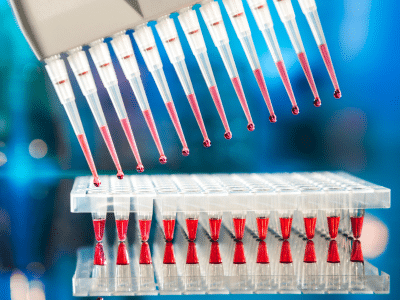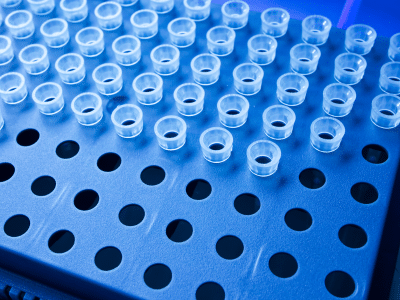In the course of this pandemic, you are regularly confronted with shortages of cones on your usual brands. The Cofrac requirement has not changed at the moment, the cones used by the laboratories must be those identified in the calibration certificates. However it is, at the moment, sometimes very difficult to comply with this requirement. In this post, we would like to help you by offering you adapted solutions.

Here are different protocols to “easily” change the cone reference between two COFRAC calibrations.
This article aims to suggest different qualification protocols in case of cone change between 2 calibrations of micropipettes covered by the accreditation. It can only be used as a basis for consideration by the laboratory and does not commit LABELIANS with regard to its accreditation.
Background :
Good practice recommendations for the use of micropipettes recommend calibration at the beginning and end of use; calibrations should also be performed with the cones used routinely. If the cones are changed at a time that is not consistent with the calibration period of the micropipettes, the laboratory must be able to guarantee the reliability of the results. Ideally, this practice of changing cones between 2 micropipette calibrations should be kept to a minimum

Recommendation for a protocol for changing cones outside the periodicity of micropipette calibration
Recalibration of micropipettes
The ideal solution is to recalibrate the micropipettes :
- end-of-life calibration with the old cones
- calibration at the beginning of life with the new cones
Micropipette controls using 10-5 or 10-6 balance
For laboratories not wishing or unable to recalibrate micropipettes and having a 10-5 or 10-6 balance, the following protocol can be considered :
- Identification of the risks linked to the change of cones: at least an impact study; ideally a risk map (via FMEA for example)
- Dosing of distilled water for each type of cone: at least 10 measurements, For variable pipettes: ideally at 10%, 50% and 100% of the nominal volume
- Comparison of accuracy and repeatability for each type of cone
- Ideally for each pipette volume
- Comparison report and conclusion (decision)
- End of life calibration with the different types of cones
It is important that the laboratory keeps a small stock of the old cones in order to be able to perform this calibration.
Micropipette controls via analysis
In the absence of a balance and the impossibility of recalibrating the micropipettes, the laboratory may opt for a comparison via analysis :
- Justification de ce protocole
- Identification des risques liés au changement de cônes : a minima une étude d’impact ; idéalement une cartographie des risques (via l’AMDEC par exemple)
- Choix de la (ou des) méthode(s) d’analyse la plus répétable
- Préparation des produits à analyser : a minima 10 analyses pour chacun des types de cône
- Pour les pipettes variables : idéalement à 10%, 50% et 100% du volume nominal
- Réalisation des analysesComparaison de la justesse et de la répétabilité pour chaque type de côneIdéalement pour chaque volume de pipette
- Rapport de comparaison et conclusion (décision)
- Etalonnage de fin de vie avec les différents types de cônesIl est important que le laboratoire conserve un petit stock des anciens cônes afin de pouvoir réaliser cet étalonnage
- Justification of this protocol
- Identification of the risks linked to the change of cones: at least an impact study; ideally a risk map (via FMECA for example)
- Choice of the most repeatable analysis method(s)
- Preparation of the products to be analysed: at least 10 analyses for each type of cone
- For variable pipettes: ideally at 10%, 50% and 100% of the nominal volume
- Performing the analyses
- Comparison of accuracy and repeatability for each type of cone – Ideally for each pipette volume
- Comparison report and conclusion (decision)
- End of life calibration with the different types of cones
It is important that the laboratory keeps a small stock of the old cones in order to be able to perform this calibration.
Comparison of results
The comparison of the results obtained with each of the cones aims to evaluate the impact of the change of cone on the precision of the micropipette / cone pair.
By taking as a reference the measurement results obtained with the old cones, it is possible to compare the results based on the EMTs of the ISO 8655 standard and on statistical tests (Student’s test and Fischer’s test).
Accuracy: The accuracy of the new micropipette/cone pair is compared with that obtained with the old cones.
- Comparison versus ISO 8655 EMT – Mean new cone – Mean old cone < EMT
- Student’s t test to check if the results are statistically significantly comparable
Repeatability: The repeatability of the new micropipette / new cone pair is compared with that obtained with the old cones.
- Comparison against ISO 8655 EMTs – s new cone < EMT
- Fischer test to check whether the standard deviations are statistically significantly comparable
Of course we are at your side to support you, in the organisation of the cone change, the choice of the qualification protocol, the preparation of the tests and formalising the results




